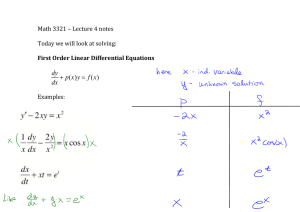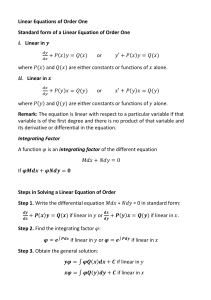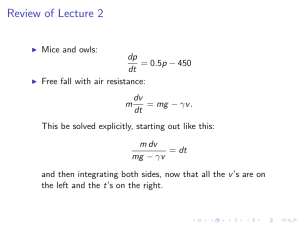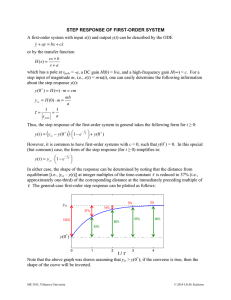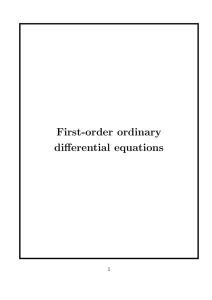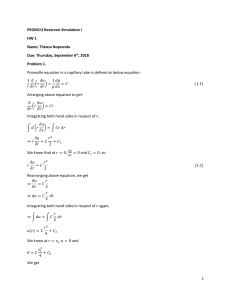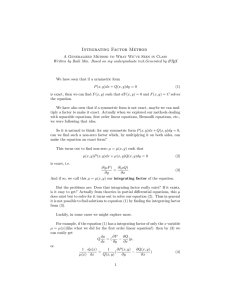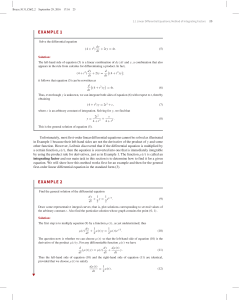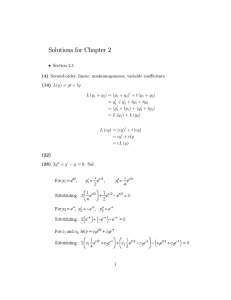General case: dx dt + p(t)x = q(t), q(t) continuous. We need to find an
advertisement
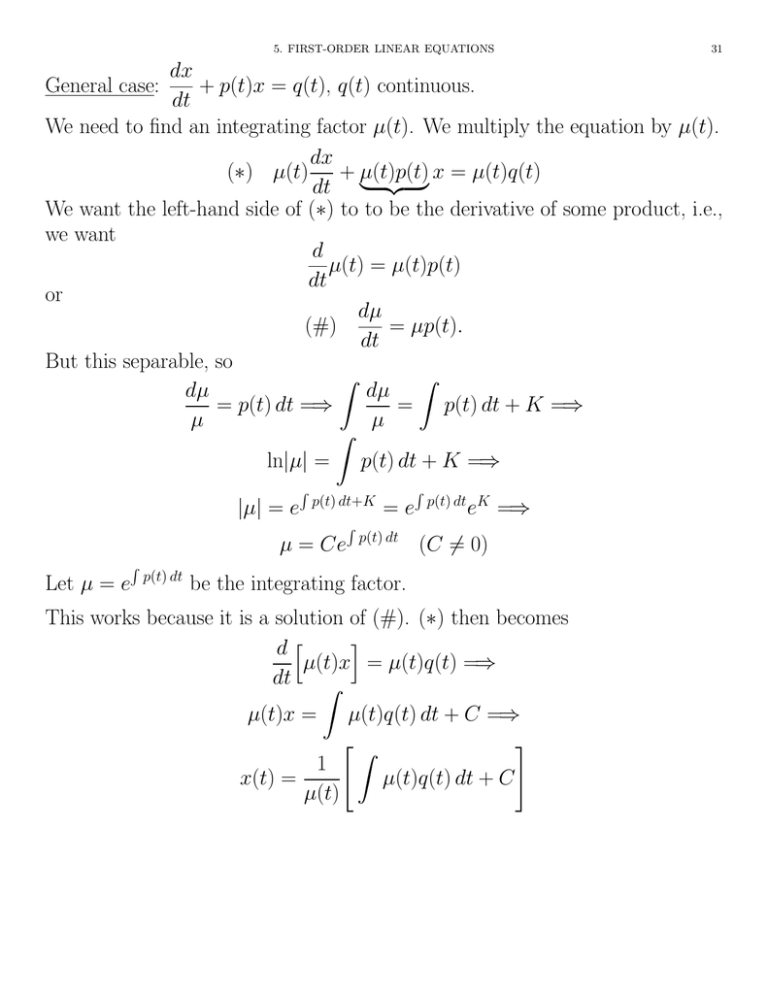
5. FIRST-ORDER LINEAR EQUATIONS
31
dx
+ p(t)x = q(t), q(t) continuous.
dt
We need to find an integrating factor µ(t). We multiply the equation by µ(t).
dx
(∗) µ(t) + µ(t)p(t) x = µ(t)q(t)
dt | {z }
We want the left-hand side of (∗) to to be the derivative of some product, i.e.,
we want
d
µ(t) = µ(t)p(t)
dt
or
dµ
(#)
= µp(t).
dt
But this separable, so
Z
Z
dµ
dµ
= p(t) dt =⇒
= p(t) dt + K =⇒
µ
µ
Z
ln|µ| = p(t) dt + K =⇒
General case:
R
|µ| = e
p(t) dt+K
R
µ = Ce
R
Let µ = e
p(t) dt
R
=e
p(t) dt
p(t) dt K
e =⇒
(C 6= 0)
be the integrating factor.
This works because it is a solution of (#). (∗) then becomes
i
dh
µ(t)x = µ(t)q(t) =⇒
dt Z
µ(t)x =
x(t) =
1
µ(t)
µ(t)q(t) dt + C =⇒
"Z
#
µ(t)q(t) dt + C
